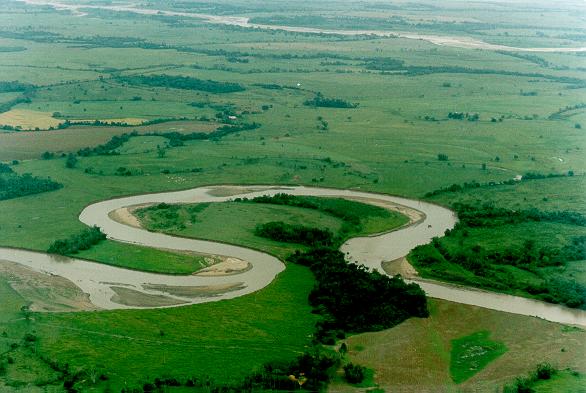|
EINSTEIN ON MEANDERS
In 1926, the renowned physicist Albert Einstein was invited to give
a lecture at the Prussian Academy and, interestingly,
chose the topic
of river meandering.1 His son,
the famed UC Berkeley Professor Hans A. Einstein, turned to river hydraulics
after practicing several years as a structural engineer.
We can surmise that the elder Einstein had a keen interest in
meandering and encouraged his son to pursue a career in river hydraulics. In 1950, Professor
Einstein made his mark in the nascent
field of
sedimentation engineering with his paper on bed-load transport, the forerunner
to the methods that are now used in practice
(Modified Einstein, 1955;
Colby, 1957; and
Colby, 1964).2
Einstein's discussion on the cause of meanders is characteristically insightful.
His attribution of secondary currents to the Coriolis force
was among the first. His
explanation of how meanders form due to a balance between inertial and frictional forces in a direction perpendicular to the
motion is masterful.
Einstein's explanations have helped us come closer to unraveling the mysteries
of river meandering.
1 Einstein, A., 1926.
The cause of the formation of meanders in
the courses of rivers and of the so-called Baer's Law.
Read before the Prussian Academy, January 7, 1926. Published in Die Naturwissenschaften, Vol. 14. [English translation in "Ideas and Opinions,"
by Albert Einstein, Modern Library, 1994].
2 Einstein, H. A., 1950. "The bed-load function for sediment transportation in open channel flows." USDA
Soil Conservation Service, Technical Bulletin No. 1026, Washington, D.C., September.
|
